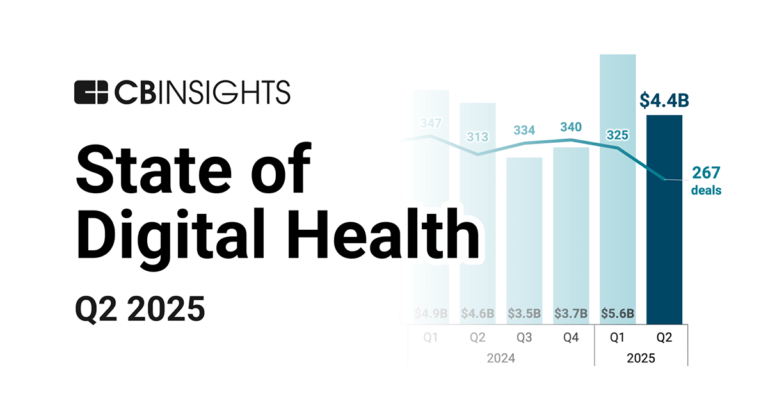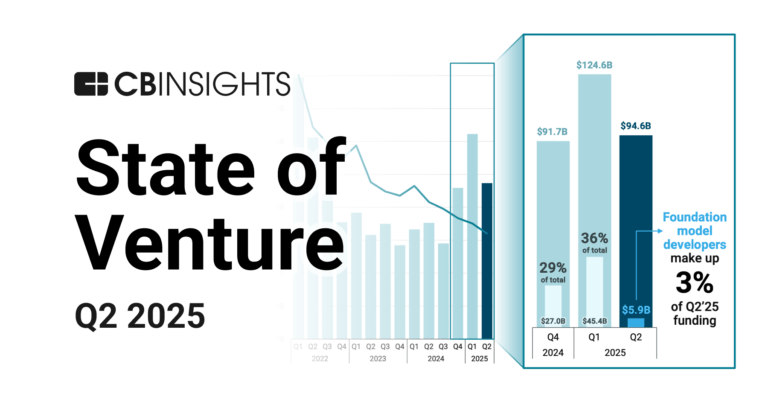
Neuralink
Founded Year
2016Stage
Series E | AliveTotal Raised
$1.33BValuation
$0000Last Raised
$650M | 4 mos agoMosaic Score The Mosaic Score is an algorithm that measures the overall financial health and market potential of private companies.
+103 points in the past 30 days
About Neuralink
Neuralink focused on developing brain-machine interfaces within the medical technology sector. Its main product is a device designed to assist individuals with paralysis by providing a means to communicate through a brain-computer interface. The company primarily targets the healthcare sector. It was founded in 2016 and is based in Fremont, California.
Loading...
ESPs containing Neuralink
The ESP matrix leverages data and analyst insight to identify and rank leading companies in a given technology landscape.
The medical brain-computer interfaces (BCIs) market offers innovative solutions for patients with neurological disorders. BCIs are devices that allow direct communication between the brain and an external device, such as a computer or prosthetic limb. This technology has the potential to revolutionize the way we treat conditions such as paralysis, epilepsy, and Parkinson's disease. BCIs can also b…
Neuralink named as Leader among 15 other companies, including Neurable, Stairmed, and Blackrock Neurotech.
Loading...
Research containing Neuralink
Get data-driven expert analysis from the CB Insights Intelligence Unit.
CB Insights Intelligence Analysts have mentioned Neuralink in 2 CB Insights research briefs, most recently on Jul 24, 2025.

Jul 24, 2025 report
State of Digital Health Q2’25 Report
Jul 10, 2025 report
State of Venture Q2’25 ReportExpert Collections containing Neuralink
Expert Collections are analyst-curated lists that highlight the companies you need to know in the most important technology spaces.
Neuralink is included in 3 Expert Collections, including Digital Health.
Digital Health
11,423 items
The digital health collection includes vendors developing software, platforms, sensor & robotic hardware, health data infrastructure, and tech-enabled services in healthcare. The list excludes pureplay pharma/biopharma, sequencing instruments, gene editing, and assistive tech.
Generative AI
2,807 items
Companies working on generative AI applications and infrastructure.
Artificial Intelligence
10,195 items
Neuralink Patents
Neuralink has filed 33 patents.
The 3 most popular patent topics include:
- implants (medicine)
- integrated circuits
- neuroprosthetics

Application Date | Grant Date | Title | Related Topics | Status |
|---|---|---|---|---|
2/28/2022 | 3/11/2025 | Multiplexing, Implants (medicine), Integrated circuits, Cardiac anatomy, Broadcast engineering | Grant |
Application Date | 2/28/2022 |
|---|---|
Grant Date | 3/11/2025 |
Title | |
Related Topics | Multiplexing, Implants (medicine), Integrated circuits, Cardiac anatomy, Broadcast engineering |
Status | Grant |
Latest Neuralink News
Sep 9, 2025
📩 Pour nous contacter: redaction@frenchweb.fr 2 minutes de lecture Sur le terrain des interfaces cerveau ordinateur, les États-Unis concentrent aujourd’hui les projets les plus ambitieux et les financements les plus massifs. Mais la compétition ne se joue plus seulement entre entreprises, elle oppose des visions stratégiques, et des modèles d’adoption qui sont propres à chaque acteur. Neuralink, fondée en 2016 par Elon Musk, a imposé son nom comme référence dans le domaine. L’entreprise a opté pour une approche radicale en développant un implant cérébral invasif à haute densité d’électrodes , capable de lire et de stimuler l’activité neuronale avec une précision inégalée. Les premiers essais sur l’humain, autorisés par la FDA, visent principalement à restaurer des fonctions motrices et sensorielles perdues. Mais l’objectif affiché dépasse largement le champ médical, Elon Musk parle d’une interface universelle, capable à terme de connecter directement le cerveau à des systèmes d’intelligence artificielle. Avec une levée de 650 millions de dollars en début d’année pour une valorisation de 9 milliards, Neuralink a consolidé sa position de leader mais reste très challengé. Face à cette avance, Sam Altman, cofondateur d’OpenAI, prépare sa riposte, avec Merge Labs , société qu’il co-fonde aux côtés d’Alex Blania (Worldcoin), et qui vise à tirer parti des modèles d’IA d’OpenAI pour créer une interface neuronale à haut débit pensée dès l’origine pour des interactions avec des intelligences artificielles. Si Sam Altman ne compte pas assurer la direction opérationnelle, son implication dans la levée de 250 millions de dollars et sa capacité à structurer un écosystème autour de GPT donnent à Merge Labs un avantage stratégique en intégrant la BCI directement dans une plateforme logicielle déjà adoptée par des centaines de millions d’utilisateurs (actuellement plus de 700 millions) Derrière ces deux géants médiatiques, Precision Neuroscience adopte une stratégie plus pragmatique. Fondée par Benjamin Rapoport , ancien de Neuralink, l’entreprise mise sur un implant moins invasif, placé à la surface du cerveau plutôt qu’en profondeur, afin de réduire les risques chirurgicaux. Cette approche pourrait accélérer l’adoption clinique et faciliter les autorisations réglementaires, en ciblant dans un premier temps les applications médicales. Enfin, Synchron incarne la voie de l’implant minimaliste avec son dispositif, qui inséré par voie endovasculaire via les vaisseaux sanguins du cerveau, contourne la chirurgie invasive tout en offrant une communication neuronale fonctionnelle. Synchron a déjà obtenu des autorisations pour des essais humains aux États-Unis et en Australie, et se positionne comme le premier acteur BCI à avoir franchi cette étape sur deux continents. Ces quatre entreprises incarnent les différentes voies possibles vers le “Merge” . Neuralink et Merge Labs visent la rupture technologique, avec l’objectif de créer une interface symbiotique entre l’homme et l’IA. Precision Neuroscience et Synchron privilégient l’itération médicale et la réduction des risques, misant sur une adoption progressive avant d’ouvrir la porte à des usages plus ambitieux. La bataille se joue aussi sur le plan économique. Neuralink dispose déjà d’un capital considérable et d’une avance en matière de démonstration technique. Merge Labs, grâce au soutien d’OpenAI, pourrait capitaliser sur un effet de plateforme unique, en intégrant la BCI dans un écosystème logiciel existant. Precision et Synchron, quant à elles, peuvent séduire les investisseurs par une feuille de route plus compatible avec les régulateurs et un time-to-market plus court. Dans cette compétition, l’enjeu ne se limite pas à savoir qui construira l’interface la plus performante mais Il s’agit de définir la norme technique et cognitive qui structurera le marché mondial. Celui qui imposera son protocole neuronal et son modèle d’adoption fixera les règles du jeu pour les décennies à venir. Les États-Unis sont aujourd’hui les seuls à disposer de plusieurs acteurs capables d’atteindre ce seuil. Mais la Chine est bien entendu de la partie, rendez vous demain pour découvrir ce qu’il se passe derrière la Grande Muraille. Découvrez notre série consacrée à The Merge:
Neuralink Frequently Asked Questions (FAQ)
When was Neuralink founded?
Neuralink was founded in 2016.
Where is Neuralink's headquarters?
Neuralink's headquarters is located at 7400 Paseo Padre Parkway, Fremont.
What is Neuralink's latest funding round?
Neuralink's latest funding round is Series E.
How much did Neuralink raise?
Neuralink raised a total of $1.33B.
Who are the investors of Neuralink?
Investors of Neuralink include Founders Fund, Valor Equity Partners, VY Capital, DFJ Growth Fund, Google Ventures and 27 more.
Who are Neuralink's competitors?
Competitors of Neuralink include Science, Paradromics, dotLumen, Cognixion, Neurable and 7 more.
Loading...
Compare Neuralink to Competitors

Neurable specializes in brain-computer interface (BCI) technology within the neurotechnology sector. The company offers products that allow users to interact with devices using brain signals. Neurable's technology can be integrated into various applications, including wellness and diagnostics. It was founded in 2015 and is based in Boston, Massachusetts.

Kernel focuses on neuroscience. It operates within the healthcare and technology sectors. The company's main offerings include proprietary neurotechnology used to build a portfolio of brain-based biomarkers, accelerate treatment discovery, improve patient outcomes, and transform neuro medicine. Kernel primarily serves the healthcare industry, specifically the neuro medicine sector. It was founded in 2016 and is based in Culver City, California.

Blackrock Neurotech focuses on developing brain-computer interface technology to assist individuals with neurological disorders within the medical device industry. The company offers neural implants for individuals with paralysis and other neurological conditions. Blackrock Neurotech primarily serves the healthcare sector, including patients and research institutions. Blackrock Neurotech was formerly known as I2S Micro Implantable Systems. It was founded in 2008 and is based in Salt Lake City, Utah.

Paradromics develops brain-computer interfaces (BCI) within the healthcare technology sector. The company provides a data interface that captures and interprets neural signals for individuals with neurological and brain-related conditions. Paradromics serves individuals with severe motor impairment resulting from conditions such as ALS, spinal cord injury, or stroke. It was founded in 2015 and is based in Austin, Texas.

Synchron operates as a medical device company. It focuses on the development of minimally invasive neuromodulation technology solutions. It develops an endovascular brain-computer interface to access every corner of the brain using the blood vessels. It offers a switch device to help paralyzed people, such as those with amyotrophic lateral sclerosis (ALS), communicate by controlling computer cursors with their minds. It was founded in 2016 and is based in Brooklyn, New York.

Cognixion develops noninvasive brain-computer interfaces (BCI) within the neurotechnology sector. The company offers products for individuals with complex disabilities, utilizing neuroscience, artificial intelligence, and augmented reality to create assistive and clinical applications. Cognixion's technology is aimed at individuals with accessibility needs, healthcare providers, and researchers in neurotechnology and assistive communication. Cognixion was formerly known as Smartstones. It was founded in 2014 and is based in Toronto, Ontario.
Loading...
